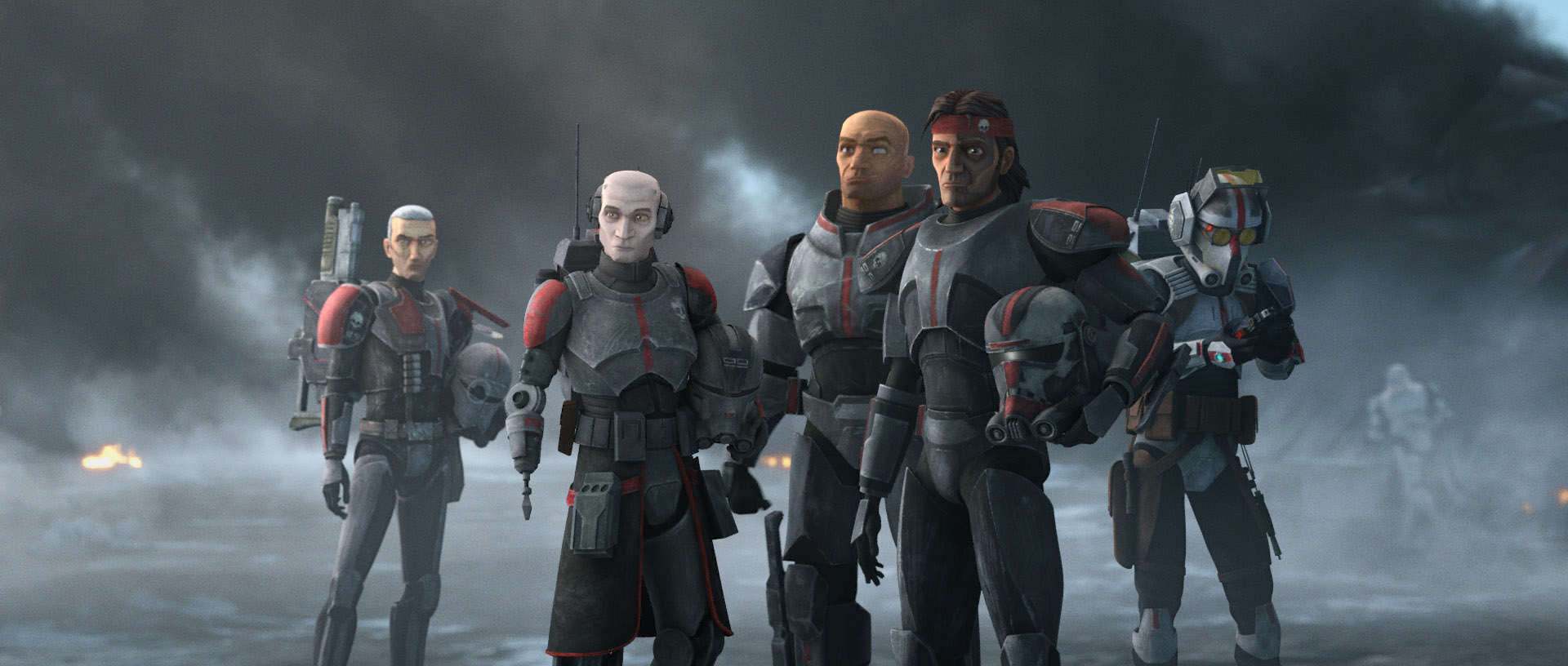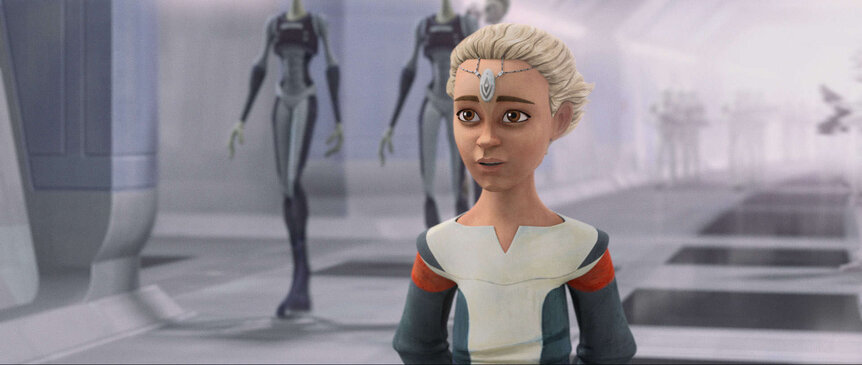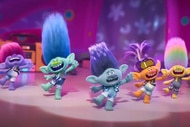Create a free profile to get unlimited access to exclusive videos, sweepstakes, and more!
Can clones have variations, as seen in Star Wars: The Bad Batch?

The new Star Wars series, The Bad Batch, picks up a few of the threads left over from The Clone Wars and follows Clone Force 99, first introduced in that show's seventh season. Each member of 99 has some genetic variance that differentiates them from your run-of-the-mill trooper, referred to as "regs" by the Bad Batch.
It isn't a spoiler — probably not even a surprise — that the first episode of The Bad Batch orbits almost entirely around questions of cloning. Specifically, it asks various questions about the limits of cloning as it pertains to intentional variation. The regs are genetically designed to be compliant, identical, and interchangeable. The Bad Batch represents the other side of that coin: They are literally and figuratively defined by their differences, and therein lies their strength.
Cloning here on Earth is a little different (thankfully). Let's look at how it works and if something like the Bad Batch or regs are possible.
CLONING
In Star Wars, the Clone army is grown from genetic material provided by Jango Fett on the planet Kamino. The process by which the Clones were made is unclear, but we know they had to be made rapidly and en masse. In Star Wars: Attack of the Clones, Lama Su mentions 200,000 Clones have already been made with a million more on the way.
Cloning of adult individuals, as we know it in the real world, is a complex and uncertain process with specific requirements. In order to clone an adult individual, scientists take somatic cells (non-reproductive cells) and insert them into an egg cell, in a process known as nuclear transfer. The egg cell has its nucleus removed, and the somatic cell then provides the genetic material the egg will duplicate. Before any of this can happen, scientists must harvest egg cells from a member of the target species, or one genetically close enough to pass muster. Once cell replication occurs in the egg, it is implanted into a surrogate in order for the embryo to grow.
Most often, the surrogate is a member of the same species, but that isn't always the case. In 2003, scientists cloned an extinct species of ibex by taking frozen cells and implanting the embryo into a closely related surrogate. In either case, each clone requires a surrogate in order for the embryo to mature.
The image of babies grown in test tubes is purely a science fiction trope and doesn't occur in the real world — at least yet. One can imagine nightmare facilities on Kamino stocked with human surrogates birthing clones.
VARIATION
The common wisdom is that clones are always identical to their genetic donor, and it makes good sense. If the cloned offspring shares the same genetic information as its ancestor, then it should be an exact copy, no?
Sort of. It all comes down to natural variation and mutation, as well as environmental impact.
Of course, even an identical clone would have differences in temperament and personality. There are certain behaviors and dispositions that are genetically influenced but so much of who we are comes down to our experiences. More than that, even appearance can be impacted by our environment and random chance.
The first cloned cat was named Cc, short for copy cat or carbon copy, and while she was genetically identical to her mother, they looked strikingly different. Coat patterns aren't necessarily determined by genes, and Cc had a different pattern from her biological mother and surrogate mother.
We must also take into account how genes express themselves. Dolly, the famed sheep who holds the honor of being the first cloned mammal, died when she was 6 years old from a respiratory infection. She was survived, however, by cloned siblings that came from the same batch of cells as Dolly herself.
Despite being genetically identical, Dolly's four sisters (Dianna, Daisy, Denise, and Debbie) exhibited some differences as they aged. In particular, two of them experienced more advanced osteoarthritis than others, and that likely came down to environmental factors.
In what is perhaps the starkest example of variation in cloning, scientists have been able to derive both male and female clones from the same genetic material. While the new, enhanced female Clone named Omega, who the Bad Batch meets in their series' opening episode, isn't confirmed to be one of Jango's Clones, it is a possibility. If you want to get into the real-life weeds, you can start here, but the gist of it isn't too hard to grasp. Using particular mouse cell lines, researchers found a natural occurrence of about 2 percent wherein the Y chromosome was lost. Using those cells to create clones results in a mix of both male and female offspring from the same genetic material.
Despite all we know in this galaxy about cloning mammals after 25 years of doing it, we still don't have anything close to Star Wars' levels of understanding. The success rate is staggeringly low and we continue to learn that there is much more variation both before and after the cloning process takes place than we originally thought. The evidence seems to suggest that any population of clones numbering in the hundreds of thousands would likely have significant genetic variation. It's probably the case that "bad batches" would be much more common than we previously supposed.
Star Wars: The Bad Batch is now available on Disney+.
















